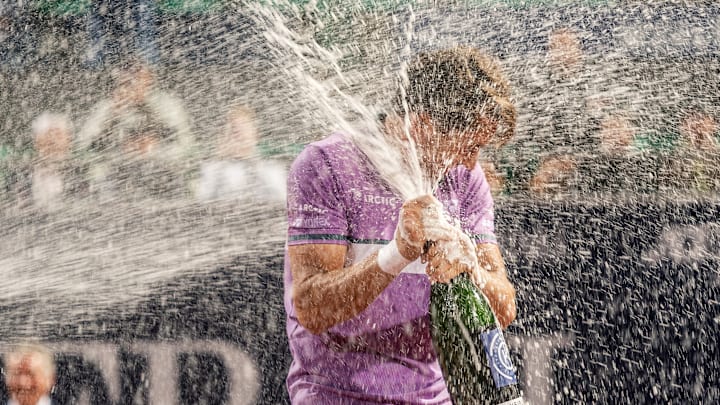Championships. Promotions. Exciting life-changing events. New Year’s Eve. Champagne is at the epicenter of celebration. But how did this sparkling wine become synonymous with our most joyous occasions? The story of champagne's ascent to celebratory fame is as lively and charming as the drink itself.
The story begins in the rolling hills of the Champagne region in France, where winemaking dates back to the Roman era. However, it wasn't until the 17th century that champagne as we know it started to take shape. Enter Dom Pérignon, a Benedictine monk with a taste for perfection. While attempting to improve the still wines of the region, he stumbled upon the secret of bubbles. Legend has it that upon tasting his first sparkling creation, he exclaimed, "Come quickly, I am tasting the stars!" This moment marked the birth of a beverage that would go on to enchant the world.
As production techniques improved, the reputation of champagne also grew. By the 18th century, it had captured the hearts of the French aristocracy. The unique taste and the mesmerization of the bubbles caught the attention of the royals and nobles. Champagne became a staple at lavish parties and royal courts, symbolizing wealth, sophistication, and a hint of decadence.
The journey of champagne from the French elite to the global stage was just beginning in the 19th century. Its popularity boomed, partially due to clever marketing and the rise of iconic champagne houses such as Moët & Chandon, Veuve Clicquot, and Louis Roederer. These houses not only perfected the art of champagne making but also understood the power of branding. They positioned champagne as the drink of choice for life's grandest moments.
One of the pivotal moments in champagne’s association with celebration came from an unexpected source: sports. In 1967, Dan Gurney, an American race car driver, spontaneously sprayed champagne from the winner’s podium at the 24 Hours of Le Mans. This joyous act of spraying champagne into the crowd caught on, and soon it became a ritual at major sporting events. The sight of victorious athletes dousing themselves and their teammates in champagne captured the essence of winning and exuberance.
Champagne's popularity kept increasing and it became a staple in New Year's Eve celebrations worldwide. The tradition of raising a champagne toast at midnight originated in the late 19th and early 20th centuries as a way for people to usher in the new year in a luxurious and festive manner. The fizz, the sparkle, and the celebratory sound of the cork popping became iconic symbols of new opportunities, optimism, and happiness.
Champagne became the preferred drink for personal milestones, such as weddings, anniversaries, promotions, and the birth of a child. Its bubbly nature reflected the happiness and thrill of these significant events, making it the ideal choice for moments of celebration.
Today, champagne’s reputation as the ultimate celebratory drink is unquestionable. It has surpassed its origins to become a global symbol of joy and achievement. Whether it's the glamour of a Hollywood premiere, the intimate happiness of a wedding toast, or the worldwide anticipation of New Year's celebrations, champagne is present, sparkling, and lively, serving as a testament to human creativity and the universal desire to honor life's most significant occasions.
Championships. Promotions. Exciting life-changing events. New Year’s Eve. Champagne is at the epicenter of celebration, and its journey from the vineyards of France to the hearts of people worldwide is a story of triumph, tradition, and timeless elegance.
